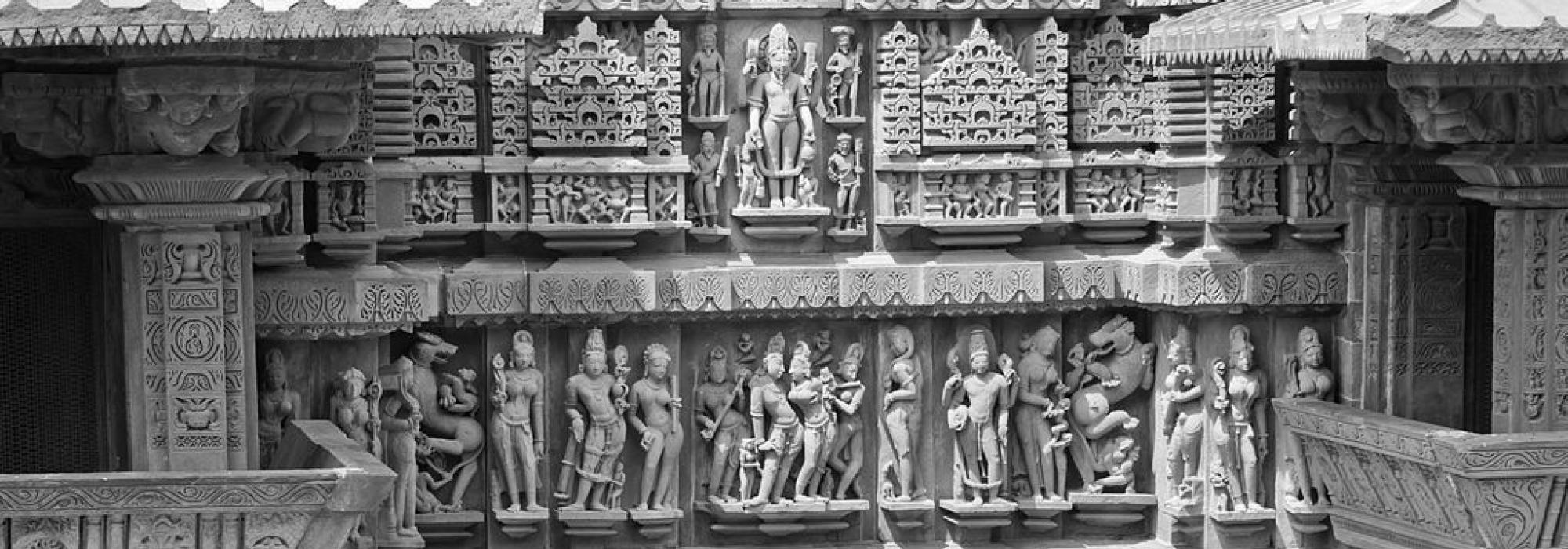Let us focus on shrngaaraabhinaya (expression of shrngaara – love) that is based on graceful dance (laasya). Like mentioned in the previous article, delineation of female characters has been the focus of most dance forms for centuries. We are familiar with love-poems related to women and their depiction in dance. When men started performing dance based on shrngaara, some difficulties probably arose. In fact, it is rather apt for dancers to put on the roles described in the lyrics, regardless of the actual gender of the dancers. However, when a dancer has to portray shrngaara, donning the role of the opposite gender, he will have to bring in a few elements of Loka-dharmi, that are not natural to his real gender and are also inconsistent with his costume (aaharya). This is true of the depiction of all rasas, when a dancer needs to put on the role of the opposite gender. Moreover, not all dancers are trained well enough to switch characters easily and smoothly between roles that suit the context. It is like doing a ‘para-kaaya-pravesha’, entering another’s body and mind. Therefore, it is natural and easy for male dancers to imitate masculine characters and female dancers to imitate feminine characters. However, such imitation is merely ‘anukarana’. Thus, a male dancer with a little talent might find it natural to portray male characters. In addition to this, the number of people who can understand and appreciate the portrayal of characters using Naatya-dharmi is also decreasing. ‘Anukeertana’, however, does not pose such problems and the character of the opposite gender can also be established easily. It is easier for a male dancer to put on a female costume and depict female characters, as it removes the inconsistency between the costume and the character. (A male dancer donning a masculine costume and depicting female characters is an inconsistency that a less talented dancer might fight difficult to overcome). This can also help the lay understand the character easily. A layman might not have a mind sensitive enough to appreciate classical dance, unlike a sahrdaya, who has a well trained eye for it. Furthermore, many male dancers do not prefer to enact femininity. (This is the philosophical stance that a dancer takes. Ideally, realistic aspects of the world should not be confused with those of dance. It is rare to find artists having this kind of perspective, where they separate real life and dance.)
[contextly_sidebar id="RCzoB83HhrfoX92SPyzUXk02LEjfYjzK"]
There is yet another aspect that needs to be taken into consideration here. If the theme that is depicted through laasya is always feminine, it becomes monotonous. Absence of variety makes it boring. It would be like portraying only one face of nature, that is both masculine and feminine. Masculinity and femininity are found in different proportions at different levels in the world. It would thus be more holistic if both these aspects are depicted in art too, i.e, femininity through naaykiaabhinaya and masculinity through naayakaabhinaya. They can be portrayed best by employing shrngaara rasa, which is known as the ‘King of Rasas’ (rasa-raaja). Looking at masculinity from a philosophical perspective, the male is seen as the Paramaatman, who is devoid of attributes and is difficult to depict through abhinaya. From the perspective of human emotions, however, this difficulty is overcome and male characters can easily be delineated. It is only when a super-natural or uber-natural thing is humanized that, we, as humans, can enjoy it. Geetagovinda too, which symbolically depicts the unison of jeevaatman and the Paramaatman through shrngaara has employed sensual aspects. Such philosophy should only be suggested through dance by employing human emotions. The resultant, i.e., the end product of all rasas is the shaanta rasa. All rasas are just external manifestations of shaanta rasa. We thus see the need of Naayakaabhinaya in dance filled with laasya too.
The different kinds of Naayakas
Scholars identify four kinds of naayakas (masculine characters/ heroes), viz., Dheerodaata, Dheeroddhata, Dheeralalita and Dheerashaanta. These kinds of naayakas are mainly depicted in roopakas (roughly translated as ‘plays’). They are classified as ‘pati’(husband), ‘upapati’ (paramour) and ‘vaishika’ (addicted to prostitutes), who correspond to the three kinds of naayikas (female characters/ heroines) – sveeyaa, anyaa and saadhaaranaa.
Pati is further classified as ‘anukoola’(friendly), ‘dakshina’ (courteous), ‘drshta’ (impudent) and ‘shata’(scoundrel) . Shata is of two kinds – maani (svaabhimaani –with excessive pride/ vanity) and chatura (shrewd). Depending on their social and cultural circumstances and their inherent nature, they are categorized into three – uttama (superior), madhyama (moderate) and adhama(inferior). All of these kinds of heroes are well versed in the art of love- shrngaara. Bhaanudatta in his ‘Rasamanjari’ defines the characteristics of ninety-six kinds of heroes.
Adapted from the original Kannada by Arjun Bharadwaj
















































